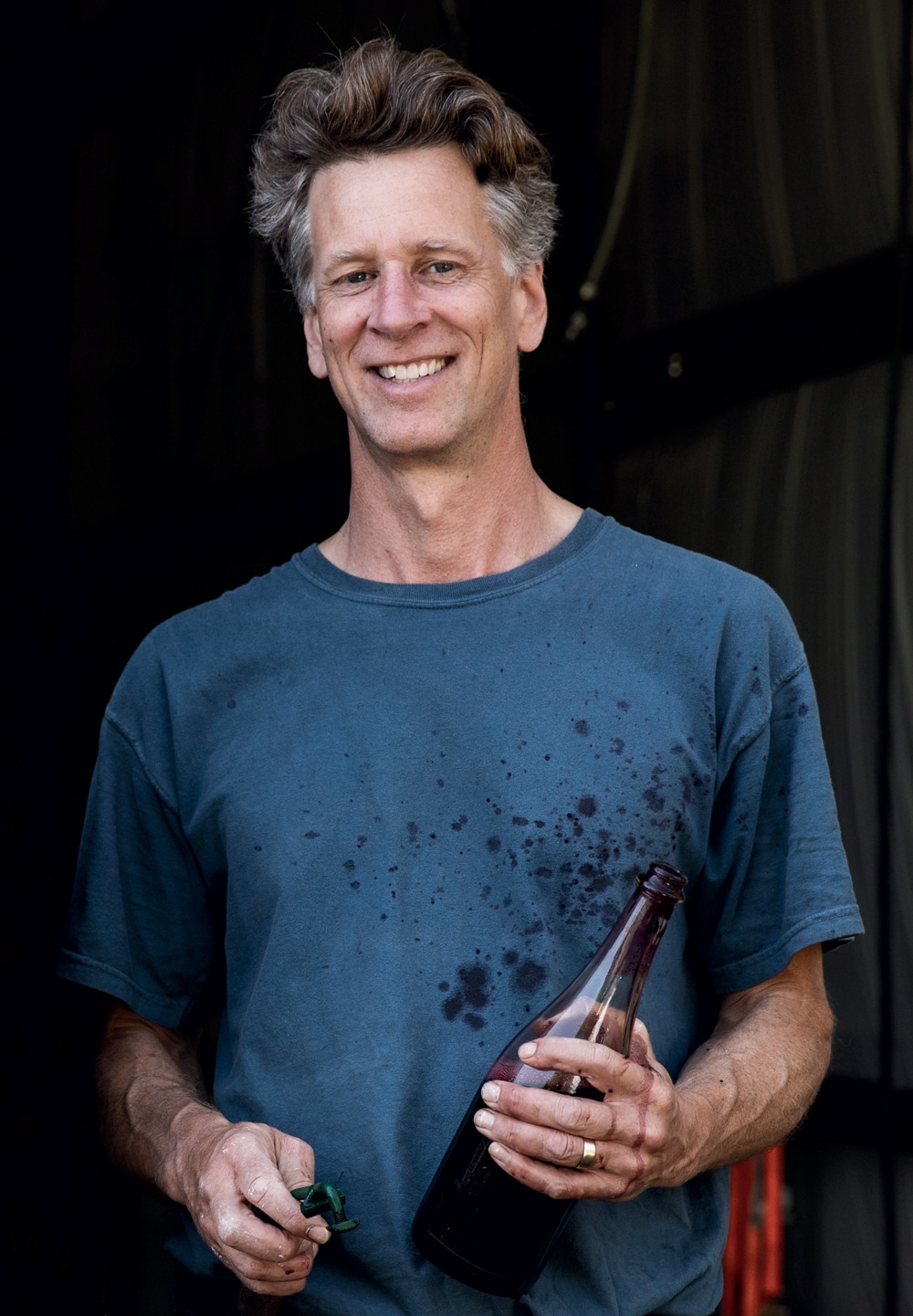Weekends with Yankee Q&A | Michael Terrien of Bluet Wild Blueberry Sparkling Wine

Winemaker Michael Terrien at the Bluet production facility in Scarborough, Maine. It’s just down the road from where he and cofounder Eric Martin grew up, in Cape Elizabeth and South Portland, respectively.
Photo Credit : Greta RybusMichael Terrien isn’t the first person to make wine from Maine’s famously flavorful wild berries, but he’s the first with serious winemaking chops. The Maine native had been making celebrated Pinot Noir and Chardonnay in California’s Napa Valley for 20 years before he and his childhood friend Eric Martin launched Bluet—a dry, sparkling wine made entirely from wild blueberries—in 2014. Could Down East Maine become the Napa Valley of blueberry wine? Terrien explains why he and a lot of other people in the state are starting to think so. —Rowan Jacobsen

Photo Credit : Greta Rybus
Q: Why on earth would a Napa Valley winemaker make blueberry wine?
Are you kidding? A tart and sweet Stone Age fruit, bursting with flavors that speak of the terroir of glaciers, granite, and the ancient Atlantic sea floor? Tell me another fruit that has better winemaking bona fides than the Maine wild blueberry.
Q: What’s it like, and who is it for?
It’s wicked tart, bubbly, and blue—not exactly a focus-group kind of wine. Five years ago, stores didn’t know where to put it. We thought we might have to drink it all ourselves. But we’re finding a true fan base with the younger crowd that drinks natural wine, wild beer, funky ciders, and hard kombucha. Not just in Maine, either. Napa Valley’s Fatted Calf [an acclaimed charcuterie and butcher shop] sells quite a lot of it. A hotel on Hollywood Boulevard serves the cans poolside.
Q: Are you the first to do this?
Surely it must have been a farmhouse beverage in the 19th century, but in modern times Bob Bartlett of Bartlett Maine Estate Winery was the first to make a serious wild blueberry wine. We know from decades-old bottles of Bartlett that wild blueberry wine can age especially well. But Bob doesn’t make sparkling wine, so we may be the first to make a bubbly at any sort of scale.
Q: Maine’s wild blueberry industry has been around for centuries. Why is this happening now?
It’s the zeitgeist. The back-to-the-land promise of the 1960s, which brought my parents to Maine, is vivid again. Ten years ago, people were just beginning to discover heritage cider and sour ales. Now they’re ready for a drink that’s 100 percent wild blueberries, with zero sugar and zero sulfites. It’s a superfood, stuffed with antioxidants, naturally low in alcohol, and it tastes crazy alive with beautiful natural acidity from the coast of Maine.
Q: Was this a hard sell for the berry growers?
At first they thought we were crazy. The first year, John Boyington of Ridgeberry Farm flat-out told us a thousand pounds was way more fruit than we’d know what to do with. Now we buy 50 tons. Globalism has gutted the field price of blueberries. It’s been tough for families who grow them to survive. We offer our growers a better price—in cash—and it could get better. Apple growers sell cider apples for five times what they used to get for table apples. That could be the story of Maine wild blueberries.
Q: Wild blueberries are so small. Is there really enough fruit to supply a wine industry?
There’s more than enough to make a million cases of wine. That may sound like a lot, but it’s a fraction of a percent of California’s production. Nevertheless, it would solve the crisis for our family farms. The University of Maine and the Maine Community College System are interested in supporting this new industry, and there’s a trade group taking shape to encourage others.
Q: What would success look like? Give us the dream vision.
We see a near future where a handful of makers are all working together, learning how to make great wine. Our friend Joe Appel, who had been the wine buyer at Rosemont Market, quit his job in 2019 to start making blue bubbles. When I close my eyes, I see dozens of wineries a decade from now, each making wines that taste like their fields, from Appleton Ridge to Blue Hill to Roque Bluffs, like the grower-producers in Champagne. Then terroir starts to mean something.
To go deeper into the story of Bluet and the Maine blueberry wine industry, look for Rowan Jacobsen’s feature story in the July/August 2021 issue of Yankee.


